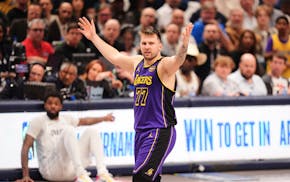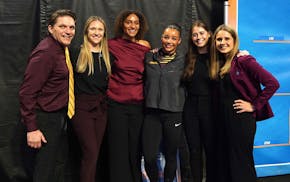If there is an absolute about participation in Minnesota deer hunting, it's that it's a varied world.
Hundreds of thousands still will take to the forests and fields beginning Saturday for the firearms season but, mirroring recent years overall, their numbers over time likely will reflect fewer are hunting, officials said.
The notion runs counter to a popular COVID-19 narrative, that the pandemic goosed outdoors activity across the board. Fishing license sales saw a double-digit increase in 2020 that carried into this year, but the pandemic bump was not evenly distributed despite what on the surface looks like positive gains among deer hunters during tumultuous times.
License sales for the firearms season had a slight increase in the week leading up to the 2020 opener, according to the Department of Natural Resources. Sales three days before the opener were up nearly 3% from 2019 (from 240,556 to 247,384). Firearm licenses sales this week are about the same from a year ago at this time — as of Wednesday, 247,434 licenses had sold.
In 2020, 478,232 deer firearm licenses sold, up 4% from 2019.
In contrast to some data, there are promising markers of hunter participation as outdoors routines get closer to normal — and inspire newcomers.
The Minnesota Deer Hunters Association (MDHA), with 60 chapters and about 20,000 members, had to lean on Paycheck Protection Program loans among other channels to maintain its grants and habitat work as the pandemic shut down a central lifeline: banquets, which raise money and help sustain and increase membership, said executive director Craig Engwall.
MDHA raised $700,000 during its 2019-20 fiscal year. Banquet revenue dropped dramatically during 2020 to $290,000. This year there have been 25 banquets, with only two canceled owing to COVID-19, Engwall said, and members' enthusiasm for gathering this fall and raising funds is unmistakable.
"Many have been sellouts," Engwall added, "and those attending were raising more money."
The DNR's James Burnham coordinates programs to recruit and retain hunters and anglers, activities that collectively have been stable or in decline as traditional participants like Baby Boomers age and retire from sports afield.
Burnham said the pandemic effect was uneven across different types of hunting and fishing as activities shuttered and then reopened in 2020. In particular, he said he expects annual deer firearm licenses sales to continue percentage declines in the low single digits.
Still, Burnham hopes the DNR's pivot to outdoors skills webinars and other online offerings last April during the pandemic will have a lasting impact on current and new hunters who tuned in. As many as 1,500 people registered for the webinars, covering topics like firearm selection and archery hunting.
DNR outreach coordinators are hoping for continuity with the online gatherings, taking those lessons and engaging newcomers outdoors to in-person programming like how-to-hunt courses that will return to calendars, he said. He said that developing a mentoring network is ongoing, citing collaboration with groups like Pheasants Forever and Backcountry Hunters & Anglers. Benji Kohn is the DNR's volunteer mentor coordinator.
Becoming an Outdoors Woman, or BOW, fits into Burnham's hopes to leverage partnerships. BOW is a highly successful skills program through the DNR and its organizers are excited about continuing their mission of empowering Minnesotans.
Firearms, and especially archery, hunts have been growth programs for BOW, said its coordinator, Linda Bylander. BOW has grown exponentially since its small-scale founding in 1995. Bylander looks forward to normalcy, which means gathering for workshops and programs instead of virtual offerings.
Bylander said BOW's partnerships, like its workshops at environmental learning centers like Osprey Wilds in Sandstone, Minn., and Eagle Bluff in Lanesboro, Minn., are foundational to success, and BOW's volunteer network is its "secret sauce."
Bylander said many participants attend one of the multiday workshops which divide activity by thirds into hunting, fishing and some traditional activity. Women meet other women who hunt, she said, and that social connection changes attitudes for the positive about what it means to take a deer.
There also are nearly 60 programs, limited to 10 people, with topics like learning archery or deer hunting that provide one-on-one time with mentors.
Now, Bylander and others are planning an archery hunt for 2022. She said women make up about 13% of all Minnesota hunters, and archery has seen the biggest growth and interest among women.
Bylander thinks her BOW volunteers — the program's "heart and soul" — will sustain such trends.
"We have women so passionate for helping other women," she said.
What moves should Minnesota United consider at next MLS trade deadline?

For Wild's leader, playoff time and payoff time arrive together

Samuelson finally gets Wi-Fi, finds out she's a member of the Lynx

Souhan: Ant as the new Moss? Nope. The Lakers have that player

